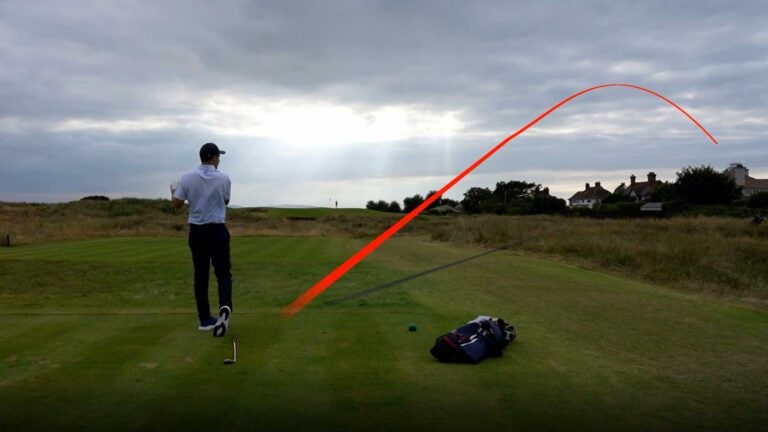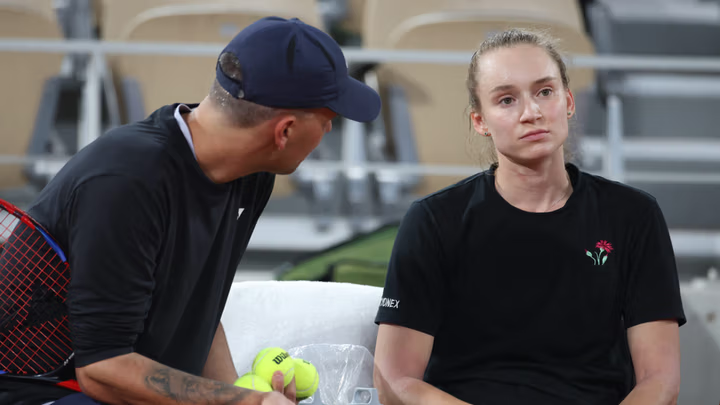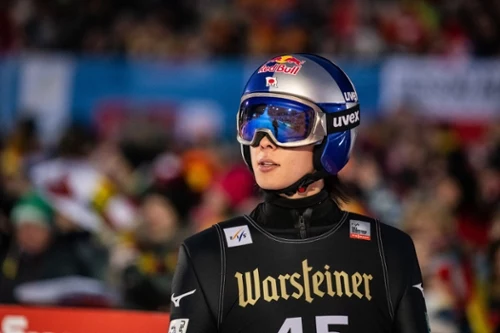I walked in Tiger and Rory’s footsteps — and hit a shot they never could
In 2006, Tiger Woods meticulously deconstructed Royal Liverpool, approaching the course with the precision of an archaeologist. He was determined to win, confident that victory was inevitable as long as he avoided major mistakes. Instead of using a driver to challenge distant fairway bunkers, which would be akin to using dynamite on a delicate excavation,…
In 2006, Tiger Woods meticulously deconstructed Royal Liverpool, approaching the course with the precision of an archaeologist. He was determined to win, confident that victory was inevitable as long as he avoided major mistakes. Instead of using a driver to challenge distant fairway bunkers, which would be akin to using dynamite on a delicate excavation, Woods opted for a more refined strategy. He left the power shots to his competitors, choosing instead to navigate Hoylake with 2-irons off the tee and long irons aimed at the center of greens. With each fairway and green he hit, his victory became more certain.
Winning a major championship typically requires taking some risks, but Woods, particularly the 2006 version, was intent on avoiding any risks. “That week was far and away the best ball-striking tournament he ever had,” his swing coach, Hank Haney, later told The Scotsman.
Woods’ victory was a testament to discipline and patience. With Royal Liverpool dried out and fast, he utilized the ground to advance his low-flying irons, even if it meant longer approach shots than his competitors. This strategy honored his late father Earl, who had passed away in May of that year.
“He was always on my case about thinking my way around the golf course and not letting emotions get the better of you, because it’s so very easy to do in this sport,” Woods said. “He would have been very proud.”
Woods’ controlled approach contrasted sharply with his emotional reaction on the 18th green, where he released months of pent-up sorrow, sobbing into the arms of his caddie, Steve Williams.
“I guess I’m kind of the one who bottles things up a little bit and moves on, tries to deal with things in my own way. But at that moment, it just came pouring out with all the things that my father has meant to me and the game of golf,” he said afterward. “I just wish he could have seen it one more time.”
Fast forward to 2014, and Rory McIlroy approached Royal Liverpool as if he were blasting a tunnel through a mountain. The Northern Irishman, already the best driver in the world, took a completely different approach to Hoylake. The course was greener and lusher than the one Woods had tamed eight years earlier. McIlroy’s aggressive style of play was in vogue: smash the ball down the fairway and play from there.
“The way he plays is pretty aggressively,” Woods said that week. “When he gets it going, he gets it going. When it gets going bad, it gets going real bad. It’s one or the other.”
McIlroy was certainly on form that week. He opened with a 66 to grab the first-round lead, built a six-shot advantage going into the final round, and ultimately won by two strokes. This victory not only fulfilled his Open Championship dreams but also the dream of his father, who had bet that his son would win the Open by age 26.
McIlroy’s triumph hastened comparisons to Woods, and many wondered if he was the next to chase his childhood idol. He embraced the possibility.
“Golf is looking to someone to put their hand up and try,” he said. “I want to be the guy that goes on and wins majors and wins majors regularly.”
In 2022, I, Dylan Dethier, found myself at the same storied venue. Unlike Woods or McIlroy, I neither dissected nor dismantled the course. Through 14 holes, I had managed to play Royal Liverpool to a stalemate. Then came the 15th hole.
The 15th will become iconic in nine months when the Open returns to the Wirral Peninsula. Designed by architect Martin Ebert, it’s a brand-new hole meant to ensure the course’s enduring relevance. The pint-sized par-3, at just 135 yards, features a small, elevated green with views of the Irish Sea, reminding golfers of the seaside property’s beauty. The other 17 holes are near the sea but don’t flaunt it as openly, maintaining an understated charm typical of England.
I titled this piece to suggest I walked in the footsteps of Woods and McIlroy and hit a shot they never could. This riddle enticed you to read this far. While my drives couldn’t match McIlroy’s from 2014 or even Woods’ 2-irons from 2006, the fairways were the same. Royal Liverpool is a former racetrack turned golf playground, accessible to the public.
Woods and McIlroy have not yet played this new hole, so in that sense, I was treading new ground. As I stepped up to the ball, determined to conquer this challenging beauty, my swing took an unexpected turn. I hit a pure, cold shank, sending the ball veering dangerously over the head of Tamara, our host and playing partner, before it careened into a shed with an emphatic wham.
The searing memory of that shank remains vivid. While Woods and McIlroy have likely experienced similar mishits, doing so with a pitching wedge off a tee is far rarer.
Sean Zak, my playing partner, fared much better on the same shot. Despite walking the same holes as golf’s greatest legends, my mishap served as a real reminder: I could walk their path, but I wasn’t playing their game. Not quite.






